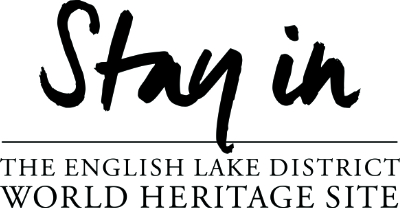Next time you’re visiting us, take a stroll up the lane from the Three Shires Inn to Fell Foot Farm and delve a thousand years back into the early history of Little Langdale.
For just next to the farm you’ll find a completely unremarkable feature in the landscape which can best be described as ‘a slight mound in a field’. We know - this is the Lake District, and there are quite a lot of slight mounds in fields. But this isn’t just any old slight mound in a field, this is a Marks and… Sorry. Seriously, this really is a rather special slight mound, indeed one might argue it to be among the most interesting slight mounds for many a mile around.
For a start, it has a name. It’s called the Thing Mound. In fact it’s also variously recorded as being called the Thing Mount, Ting Mound, and even Ting Moot, and is a fascinating archaeological relic of none other than the Viking Age!
It’s a natural mound approximately seventy feet by twenty which, if you look carefully, has had several terraces cut and constructed around it; very similar in style to the famous Tynwald Hill on the Isle of Man. Historians believe it’s purpose was as a meeting place for local government and administration, as well as general Viking hanging out to gossip or discuss business (rape, pillage, etc).
Each of the terraces around the oblong mound is a uniform 14 feet wide, and there are two on the north side, three on the west, and four on the south. The east side is hard to see in detail as trees and the farm buildings have largely obliterated it.
So why on earth would there be a Viking meeting point here in Little Langdale? Well, back in the day this was something of a crossroads with busy trading routes running through it, dating all the way back to Roman times. The road along the valley and up over Wrynose Pass was built by the Romans in order to link the Galava fort at Ambleside with the rather impressively named Mediobogdum fort at Hardknott Pass, and so was a well-established and highway by the time the Vikings came a-plundering a few hundred years later.
And Viking influence remains all around us today, with words like ‘dale’, ‘tarn’, ‘beck’ and ‘fell’ all being of Norse origin. Indeed, the word Langdale itself comes directly from the Norse ‘lang’ for long, and ‘dalr’ for valley; with Little Langdale obviously meaning something along the lines of ‘the long valley which isn’t quite as long as the other one’. These early settlers arrived from Western Norway via Scotland, Ireland and the Isle of Man; and aside of the legacy left in so many local place names it is perhaps their habit of using dry stone walls to divide up the land into smallholdings which has the greatest influence on how the area looks today.
Tin hats with horns are no longer necessary, but it’s certainly still well worth mounting your own invasion of Little Langdale and we very much look forward to welcoming you soon.



